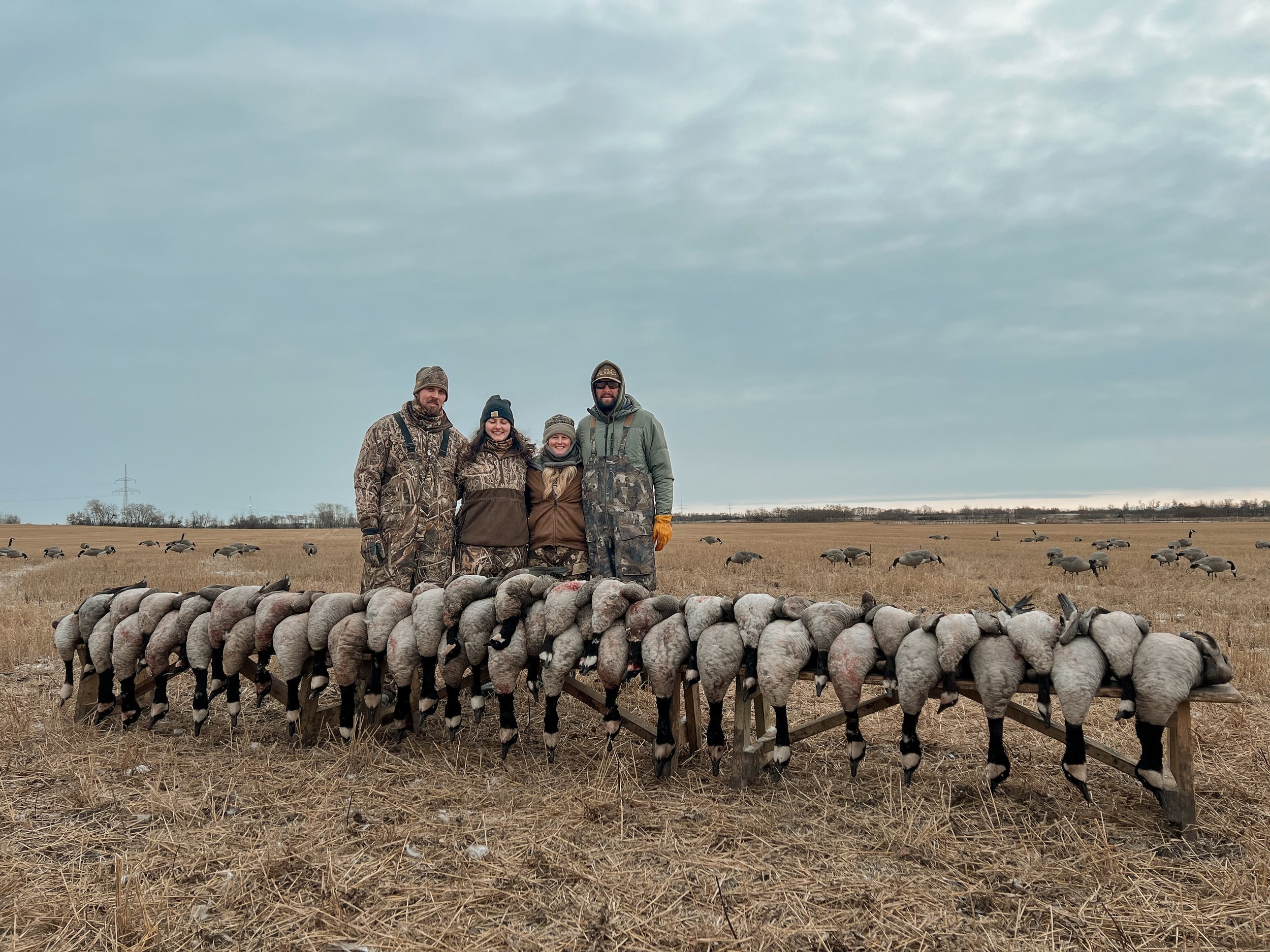“Coming from North Carolina, I had no idea what to expect!”
- Lauren Grant
Coordinated through Her Wilderness and a Saskatchewan-based outfitter, our couples’ hunt was an experience of a lifetime, encompassing everything from lodging and meals to licenses, registration, ammo, and transportation to and from the hunting grounds, it was truly an all inclusive experience. As a hunter who classifies herself between beginner and intermediate, I was both excited and nervous about what awaited me. Coming from North Carolina, I had no idea what to expect! Here are some insights and tips to help you on your first guided trip to Canada!
What to Expect at the Border
Our journey began with a flight into Bozeman, Montana, followed by a scenic drive to the Monchy Port of Entry into Canada. At the border, we were prepared with our firearm paperwork and passports. The border agents conducted a thorough check of our vehicle contents, including a comprehensive inspection of our firearms. They asked specific questions about our equipment and ensured everything complied with regulations. Interestingly, there wasn’t a significant difference in the checks between entering and leaving Canada, but both inspections were detailed in their own ways.
Licensing and Firearm Regulations
Understanding the regulations regarding firearms is essential when planning your trip. Unlike flying, where strict guidelines can complicate matters, driving a firearm across the border offers a bit more flexibility, yet it still requires proper preparation. You must have the correct paperwork that proves ownership and verifies that the firearm is registered in your name. This documentation is crucial for both entering and exiting Canada, so ensure you have it organized well in advance.
The Hunting Experience
On the day of the hunt, our guides had meticulously scouted the area in advance. They brought along a custom fabricated A-frame trailer, which served as a portable blind, and we eagerly assisted in setting it up and placing decoys. Safety and awareness were emphasized throughout the process, ensuring that we felt comfortable and informed at every step. The camaraderie among fellow hunters was a highlight. Sharing stories and laughs during the downtime made the trip feel even more special.
Downtime and Meals
During our downtime, we enjoyed the exceptional hospitality of the lodge, where all meals were provided. The offerings were not only delicious but also ensured that we were well-fueled and relaxed between hunts. If you have specific dietary needs or preferences, you can discuss these with your outfitter ahead of time. Additionally, it’s wise to check the regulations regarding bringing food and beverages across the border, as certain restrictions may apply.
Weather Preparedness
October in Saskatchewan can be unpredictable, with temperatures fluctuating between 60°F and well below 20°F. I packed a variety of layers to accommodate these conditions, including thermals, long-sleeve shirts, hoodies, jackets, insulated bibs, wool socks, and durable boots. Being properly equipped for the weather made a significant difference in our overall comfort during the hunt.
Bringing Birds Back
If you’re wondering about the process for bringing your harvested birds back home, it’s important to prepare them correctly while at the lodge. Each hunter is responsible for tagging their own birds, and you need to ensure compliance with both Canadian and U.S. regulations when transporting your harvest across the border. Regulations can change frequently, so check for updates before your trip to avoid any surprises!
This adventure truly felt like a bucket list experience, filled with learning opportunities and a profound appreciation for the great outdoors. I can't wait to go back! If you're considering your own hunting trip in Canada, I hope these insights help you prepare for an unforgettable adventure!






